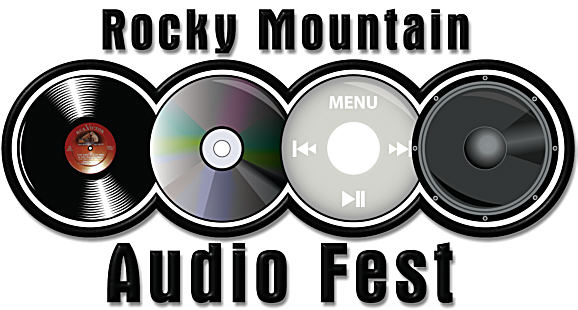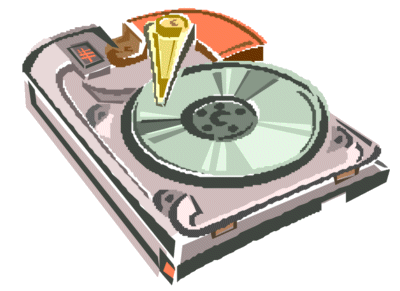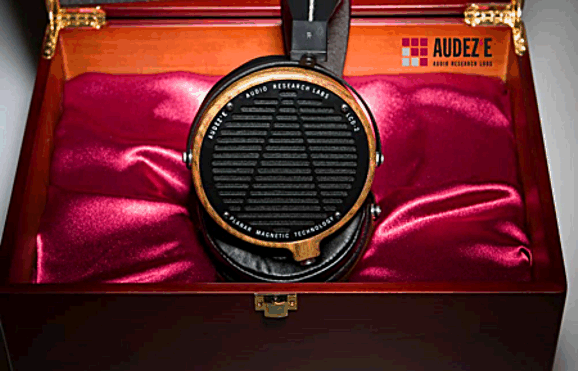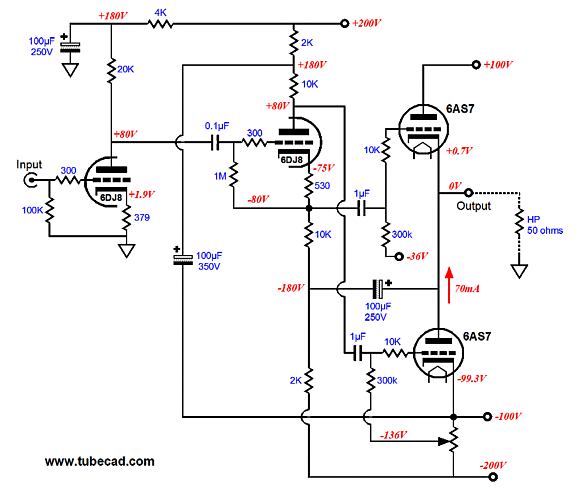30 october 2010

I came, I listened, I chatted. The Rocky Mountain Audio Fest (RMAF) 2010 was held in Denver earlier this month. It was my first attendance and I'll be back next year. While the RMAF is certainly closer to a typical stereo show than a true festival, never approaching the truly festive or jubilant, it was nonetheless fun. Perhaps, because the RMAF is put on by the members of the Colorado Audio Society, it has about it an amateur/enthusiast feel that is refreshing. And I liked how, upon entering the building for the first time on a Friday afternoon, I felt suddenly younger, as my 54-year-old hair contained enough pepper to make me standout in the room of white haired men. I have long suspected that the median age for American audiophiles is something close 65. With $70,000 turntables and loudspeakers, the young cannot afford to buy into this hobby/lifestyle. Besides, audio must compete with laptops, iPads, digital cameras, 3D TVs, and hundreds of other cheaper, and often more interesting for the young and/or too complex for the old, electronic wonders. To be honest, on the weekend, more audiophiles under the age of 30 (and more women) showed up.
In short, I highly recommend that you attend next year.
Expecting to hear great sound at a stereo show is as futile as expecting to find true love at a singles bar or haute cuisine at McDonalds. I know this well, yet I am always amazed at how disappointing the sound can usher from $200k worth of stereo gear. Reasons are not hard to find. Simply put, the modern hotel is a poor sonic venue: the rooms are too small and too feebly assembled, the wall voltage too contaminated, the sonic bleed between rooms too great, and the atmosphere too hectic and loud for quality listening. Thus, if a piece of equipment sounds bad at a stereo show, what can you conclude? Nothing, really, as nothing has been established other than under the wrong conditions, the equipment can sound bad. On the other hand, if in spite of the aforesaid troubles, a piece of audio gear excels, then we can conclude that it can sound good. (Unfortunately, the
sPecTAcuLaR sound that results from the exhibitor riding the volume control up and down as the music plays subtracts from our confidence in proclaiming a sound good.)
Okay, while I was quite disappointed with the sound in most rooms, there were a few standouts. The new Vandersteen Model 7s were magnificent. I greatly appreciate Richard Vandersteen's efforts and I love his Model 5 loudspeakers, so I was predisposed to like them, but the 7s were altogether amazing. They use carbon-fiber-coated balsa wood diaphragms and they throw a huge, convincing sound stage. The Wilson Audio Sasha speakers were wonderful as well. As were the Focal Maestro Utopia speakers. And while the Vivid Audio's Giya speaker looked goofy to my eyes, it sounded quite good, but then they should at $58k the pair. I heard few dipole speakers that were interesting and several omni-directional speakers, such as the Duevel speakers that sounded quite good.
While waiting for an elevator, I spoke with an interesting fellow who couldn't stop damning the new Magico Q loudspeakers. I had just heard them and I had expected more, but, once again, a small hotel room is far from being the ideal listening room, so my adherence to audio agnosticism protected me from judging too harshly, besides there was much to like. This fellow, on the other hand, was a daredevil of disparagement, derogating and deprecating with unsurpassed zeal. He flung insults the way a hit man empties his gun, ruthlessly, mercilessly. For him, the loudspeakers were not just disappointing, but somehow pernicious and execrable, possibly villainous.

I told him that I quite liked the Vandersteen Model 7s, just down the hall. He admitted that he hadn't heard them and he decided to give them a listen. But first he had to warm up his pejorative adjectives, much like a boxer warming up for a big fight. I was impressed by his fluid stream-of-conscious flow of abuse; he was truly a master of belittlement. I would have loved to have sat down and drank a beer with him, much as in the same way that I would much prefer to drink a beer with Simon Cowell than Paula Abdul, in spite of her many charms.
Still, I could not help remembering a similar event from when I was thirteen and a bunch of us kids had got hold of the latest Playboy magazine and we were drooling over the centerfold. Well, not all of us were. The least agreeable (and least handsome) of us disagreed, proclaiming the young woman unbelievably ugly—so much so, that he wouldn't let his dog sniff her backside. Obviously, no Playboy centerfold playmate has ever been physically ugly. I answered his sneers with the observation that should he ever be lucky enough run into this woman on the street and ask her the time and should she acquiesce and tell him the time, then this trivial encounter would no doubt prove the ultimate sexual experience of his life.
The last stereo show I attended was the CES show in 2005. What struck me immediately was the absence of CD Players. I know that I will never buy another CD Player, but I was surprised to find so many others making the same decision. If you have digital content, then a computer (in some form) is the only way to go. Of course, the computer is not enough, as a good DAC will be needed. The ease and power that a CPU bestows is too compelling to forgo. I love being able to search through the 37,991 track titles (3,525 albums) on my hard drive for a key word or find all the recordings of a favorite song. One day, I hope to rip all my LPs to my hard drive as well.

Great as the easy data sorting and searching abilities of a computer are, they are only a tiny portion of what could be possible when the computer is fully wed to the audio system. For example, the sledding-bias system I describe in blog No. 126 is one such advancement. Here is what I said:
Think feedforward, not feedback; think anticipatory, not reactive. Since we now know what the future holds for the amplifier’s output stage, we can slowly vary its idle in accordance with the projected demand. A proactive amplifier, as we would say in modern parlance. Now, if the amplifier saw that the volume setting raised or lowered, the idle current scaling would, in turn, rises or lowers in anticipation of the coming demand. Because the shift in idle current is so slow, it would fall outside of our hearing range, as the highest frequency that could be reproduced with 1-second sampling is ½Hz, which not even the biggest, sassiest subwoofer can reproduce and which only the highest-paid audio reviewers can hear.
By the way, this sledding-bias method could also be applied to class-A, push-pull amplifiers. In fact, the increase in efficiency might be so great as to make the move to class-D unnecessary.
In other words, both the rail voltages and idle current could be dynamically adjusted by the computer. In addition, a maximum volume setting could be easily computationally derived, as the computer would know what the loudest passage was in advance following it being played. Moreover, we could keep a database filed with important audio information, such as a track's polarity and preferred listening level and needed equalization. In fact, I can envisage USB controlled active loudspeaker stands that adjust the speakers' height, tilt, and angle—and, possibly, separation and distance from rear wall. Or how about two sets of loudspeakers, one for jazz and one for classical; the computer would keep track of which set was needed for each track. Or how about a USB connection from the loudspeaker that tells the computer how hot the woofer and tweeter voice coils are, so the speaker's failing could be nulled by counter adjustments to the outgoing audio signal. Even the lighting could fall within the computer's control, say a blue-lit room while listening to Miles Davis's Kind of Blue.
LPs played in many rooms. In spite of the competition form high-resolution digital audio files, they sounded marvelous. In fact, I was so inspired by the quality of vinyl playback that I have laid out a new Rev of the Aikido phono stage. It's not available yet, but soon...
Headphone aficionados had big room to themselves, wherein headphones and headphone amplifiers were the staring attractions. Unlike loudspeakers, headphones should not be venue dependent, although the problems of contaminated wall voltage and loud background noise persist. I was quite surprised to learn that, with headphone amplifiers, big watts are now desired. How many watts into a 32-ohm load? Make sure that you have your safety belt attached first. Okay. The answer is 4W! Can you believe it? 4W! That's 16Vpk and 500mA pk. Why so much juice? There's this hot $1000 headphone that I saw everywhere, and I mean everywhere, the Audez'e LCD-2. They are 50-ohm devices and super power hungry. I listened to them briefly and I was impressed. Assuming the same 16Vpk of signal, a 50-ohm load will dissipate 2.56W and draw a peak of 320mA of current, which backs off the demands made by 4W into 32 ohms a bit. Still, you can forget your iPod or Zune ever delivering that kind of juice. In fact, just building a capable tube-based headphone amplifier, using big transformers and output tubes, would prove challenging.

In the next blog entry, I will show such an design example (and this will get me back on the topic of output stages).
Back to output stage design. A 2.5W OTL for 50-ohm loads is the goal. Here is a small taste:

//JRB |
|
|
|
Kit User Guide PDFs
Click image to download











E-mail from GlassWare customers:
Mr Broskie,
I bought an Aikido stereo linestage kit from you some days ago, and I received it just this Monday. I have a few things to say about it. Firstly, I'm extremely impressed at the quality of what I've been sent. In fact, this is the highest quality kit I've seen anywhere, of anything. I have no idea how you managed to fit all this stuff in under what I paid for it. Second, your shipping was lightning-quick. Just more satisfaction in the bag, there. I wish everyone did business like you.
Sean H.
And
Hi John,
I received the Aikido PCB today - thank you for the first rate shipping
speed.
Wanted to let you know that this is simply the best PCB I have had in my hands, bar none. The quality is fabulous, and your documentation is superb. I know you do this because you love audio, but I think your price of $39 is a bit of a giveaway! I'm sure you could charge double and still have happy customers.
Looking forward to building the Aikido, will send some comments when I'm done!
Thank you, regards,
Gary.
9-Pin & Octal
PCBs & Kits
High-quality, double-sided, extra thick, 2-oz traces, plated-through holes, dual sets of resistor pads and pads for two coupling capacitors. Stereo and mono, octal and 9-pin printed circuit boards available.
Designed by John Broskie & Made in USA
Aikido PCBs for as little as $20.40
http://glass-ware.stores.yahoo.net/
Only $19.95
to keep track of your
tube and part collection
TCJ My-Stock DB
TCJ My-Stock DB helps you know just what you have, what it looks like, where it is, what it will be used for, and what it's worth. TCJ My-Stock DB helps you to keep track of your heap of electronic parts. More details.
List all of your parts in one DB.
Add part Images.
One-click web searches for part information.
Vertical and horizontal grids.*
Create reports as PDFs.*
Graphs added 2D/3D: pie & bar.*
More powerful DB search.
Help system added.
Editable drop-down lists for location, projects, brands, styles, vendors and more.
*User definable
For more information, please visit:
To purchase , please visit our Yahoo Store:
|






















